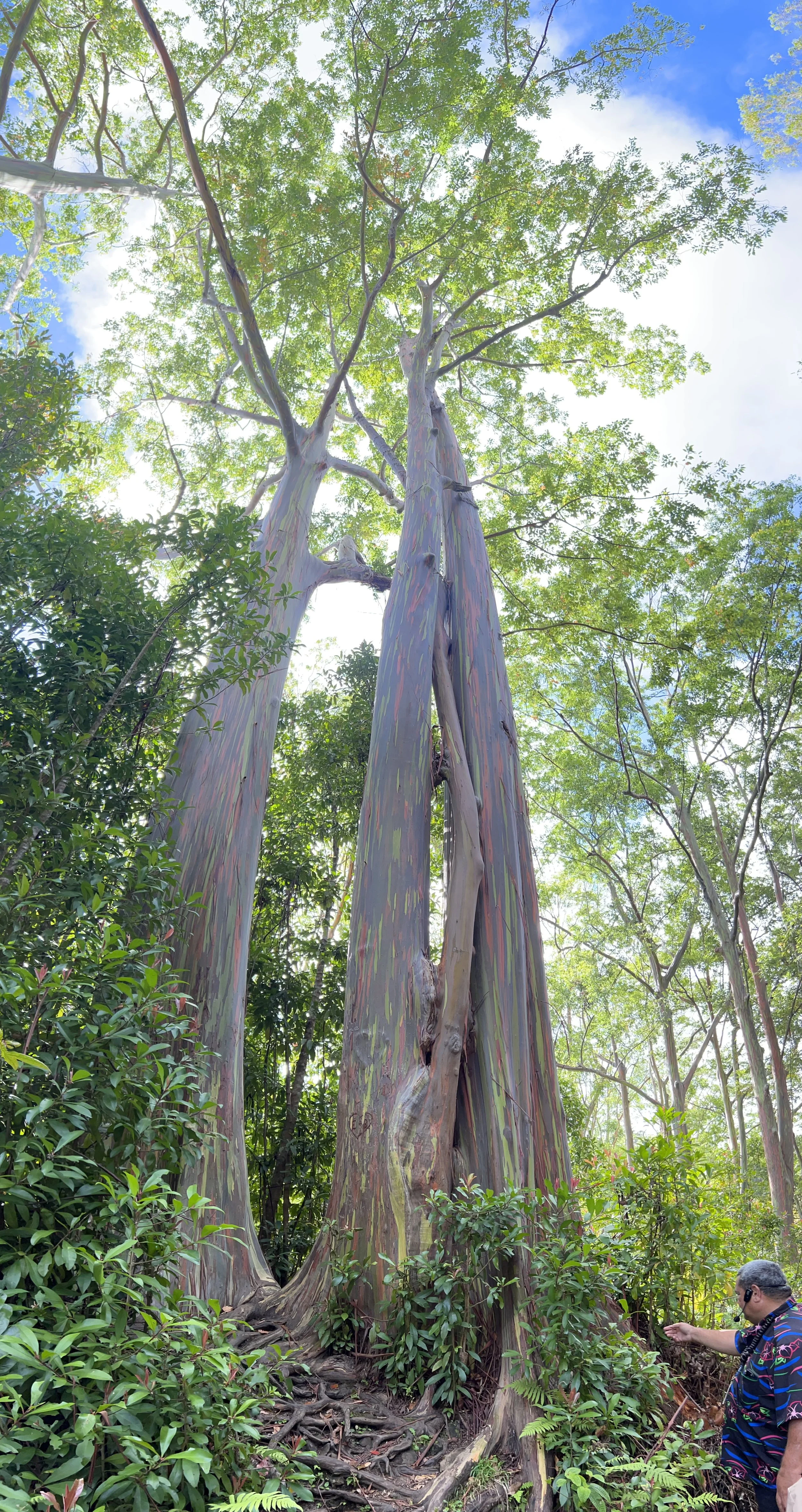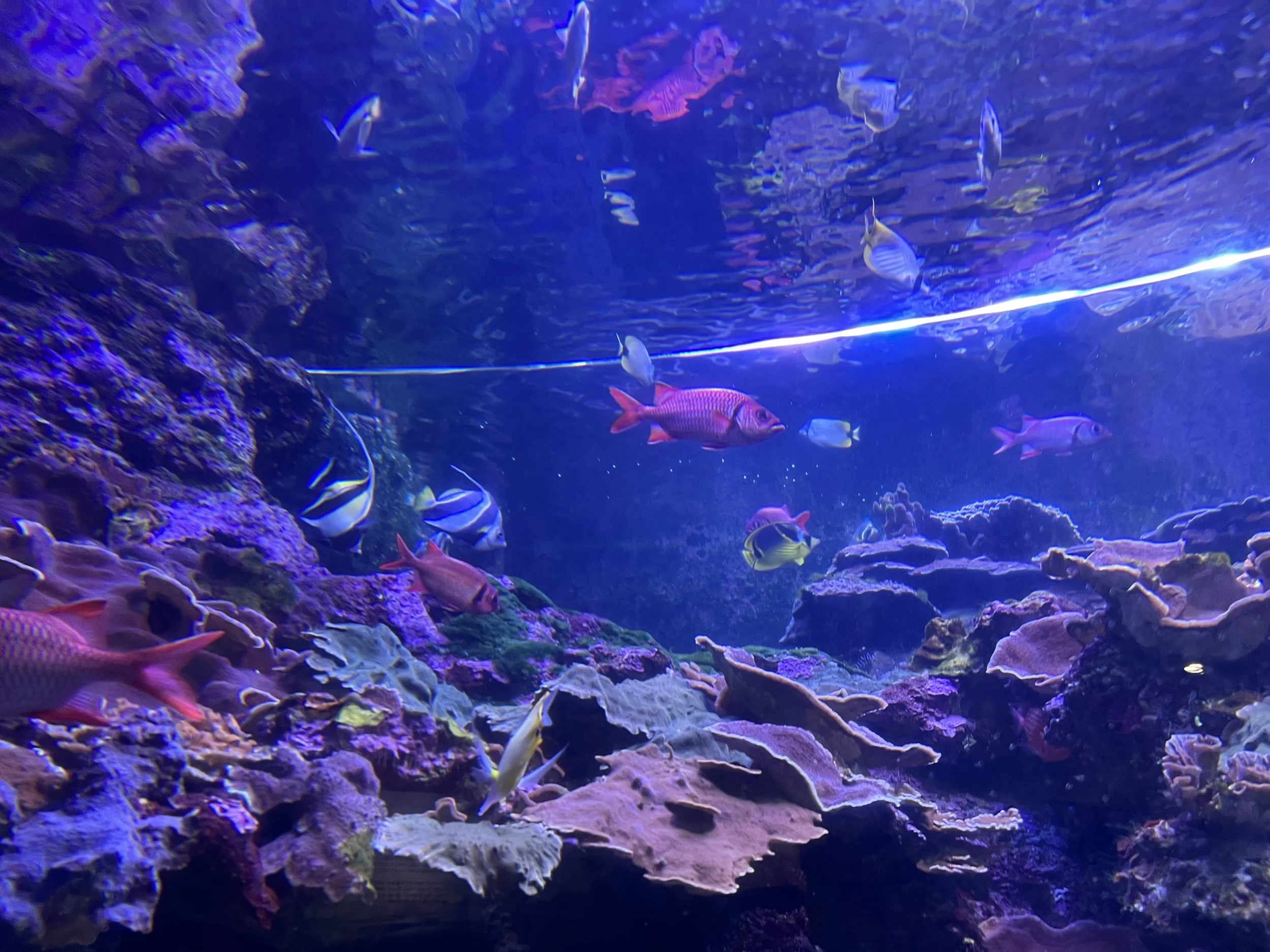My Life-Changing Trip to Hawaii: Lessons from the Land and the People
I’ve always wanted to visit Hawaii—it seemed like a dream that was always just out of reach. But after months of planning and anticipation, I finally booked the trip, and what I experienced was nothing short of life-changing. I thought I understood what Hawaii was, but what I didn’t realize was just how much I would learn about its rich culture, history, and the deep connection the locals have to the land. It wasn’t just about seeing the beautiful scenery (which, of course, was breathtaking); it was about hearing the stories and gaining a deeper understanding of the island’s heritage. I walked away not only with a new appreciation for the place but with lessons that have shaped the way I think about community, nature, and healing. It was such an eye-opening experience for me, and I’m so grateful it’s one that I got to experience in my lifetime.
Before I even stepped off the plane, I reminded myself that I was a guest — not just on the islands, but on sacred land with a deep, living history. I wanted to approach every experience with respect, gratitude, and a willingness to learn, knowing that Hawaii is so much more than a vacation spot; it’s home to a rich, vibrant culture that deserves to be honored.
What the Land Taught Me:
Here are some of the incredible lessons the land and people taught me during my journey:
I learned so much on my tour on the road to Hana. Shoutout to our amazing tour guide who taught us so much, and even made us part of his Ohana for the day. Here’s a little peek at some of what I discovered:
The Resilient Land of Hawaii
• A Stone Church That Survived a Tsunami: After a devastating tsunami in 1946, the only structure that stood was a stone-built church. The community had to rebuild everything around it, a testament to their resilience and connection to the land.
Here is the beautiful church:
• The Sleeping Plant: There’s a plant called Mimosa pudica (also known as “the sensitive plant” or “sleeping plant”). When you touch its leaves, they fold up as if they’re “falling asleep.” It’s pretty wild to see how a simple touch can make it react! Here is a fun video of me doing just that!
• Sea Turtles and Dolphins: I learned that sea turtles can live up to 200 years! Also, you can actually tell the difference between a shark and a dolphin in the water—sharks travel alone, so if you spot a single fin, it’s a shark. If you see multiple fins together, it’s dolphins in a pod!
We got to see some dolphins on our tour, and we even got to see a bunch of sea turtles up close! And not only did we get to see them up close, but we got to swim with them too! One came so close to touching me (but I knew to back away and respect it’s space and land). It was the coolest experience.
• Eucalyptus Everywhere: Eucalyptus trees are abundant in Hawaii. The scent they release fills the air, creating a calming atmosphere wherever you go. Our tour guide even pulled over at the beginning of the tour and made an eucalyptus crown to wear! It was amazing to see the rainbow eucalyptus tree up close.
• Introduced Species: Did you know the chickens, mongoose, and cats that roam freely in Hawaii aren’t native to the islands? They were brought over to control pests, but fun fact: mongooses are awake during the day and rats come out at night… so that plan didn’t end up working the way that they had hoped! It was still so cool to see these little creatures roaming around, and if you know me, you know that I love cats, so that was just an added bonus of our trip.
• The Cow “Curse”: Back in the late 1700s, cattle were protected by a kapu (a traditional Hawaiian law), and nobody was allowed to kill them. That ban lasted so long that cows basically took over the place. When it was lifted, one even killed someone, and people thought they were cursed!
Also, I got to visit the Maui Ocean Center, which was super cool and gave even more insight into local marine life and the island’s connection to the ocean.
I hope you all enjoyed those facts as much as I did! Learning about the land's resilience and the connection between nature and the people here really opened my eyes. And while so much of Hawaii's beauty shines through its landscapes and wildlife, there’s also a deeper story of resilience that hit me even harder during my trip — one rooted not just in history, but in the very recent and heartbreaking events of the 2023 fires.
A Story of Resilience: The Maui Fires
One of the most powerful parts of this trip was hearing stories from locals about the wildfires that devastated parts of Maui. We spent an hour and a half talking with one of the local women who shared how much of what happened was never told publicly. I'm so grateful she was willing to share such a personal, painful experience with us. It's not something I take lightly, and I’ll carry her words with me forever. She explained how the tragedy wasn’t just the fire—it was also in how it was handled, how people were left to fend for themselves, and how the government didn’t step up in the way it should have.
She explained that while the media covered the fires, there were many stories that were never told—stories of the real tragedy, the aftermath, and the government’s lack of support. The community, however, didn’t wait for help. Instead, they came together in unimaginable ways. They rebuilt homes, assisted one another, and showed extraordinary resilience in the face of devastation.
It was incredibly moving to hear how the locals have carried the weight of recovery largely on their own. They demonstrated how powerful a community can be, and how important it is for neighbors to help neighbors, especially when the systems designed to protect them fall short. Even after all the hardship, the woman who shared her story with us still spoke with such love and respect for her island, emphasizing how much it means to her and how proud she is to call it home.
It’s stories like these that remind us that beyond the beauty of these places we visit, there are real people and real lives affected by everything that happens. And as someone going into social work, this hit me hard. Because at the heart of this field is one belief: people heal better together. And I saw that firsthand in Maui.
If you would like to donate to those affected, you can donate here: https://www.hawaiicommunityfoundation.org/strengthening/maui-strong-fund
How Social Workers Fit In: Contributing to Healing and Support
Trips like this remind me why I chose the path of social work. Walking alongside communities like Maui's, I see firsthand how much they can teach us about community-led healing after trauma, resilience in the face of neglect, the importance of cultural respect and advocacy, and the need for accessible, trauma-informed care.
In the aftermath of natural disasters like the Maui fires, it's clear that recovery goes far beyond rebuilding homes and businesses — emotional and mental healing are just as vital. As a future social worker, I believe our role isn't to come in and "fix" things, but rather to listen, learn, and stand beside the people doing the work. Especially in places with histories of colonization, environmental harm, and systemic neglect, social workers can either be allies or obstacles. I want to be the former.
Social workers, therapists, and mental health professionals play an integral role in these recovery efforts. Many individuals impacted by disasters experience anxiety, PTSD, depression, and other mental health challenges that require compassionate, trauma-informed support. Therapy, community-based support groups, and holistic healing methods can all be powerful tools in the recovery journey.
In Maui, for example, many locals spoke about the importance of staying connected to the land as part of their healing process. The ocean, the mountains, and the plants aren’t just beautiful landscapes — they are living sources of strength, grounding, and peace. Recognizing and honoring that connection is an essential part of meaningful, respectful social work.
Ethical Travel: Respect for the Land and People
As tourists, we have a responsibility to travel with respect for the places we visit and the people who call them home. One of the most important values in Hawaiian culture is the idea of giving back to the land rather than taking from it. This means practicing “leave no trace” principles and being mindful of the cultural and spiritual significance of the land.
Fun fact: At Punaluʻu Black Sand Beach, there’s a well-known legend about Pele’s Curse. It’s said that if you take rocks or sand from the beach, you’ll be cursed until the item is returned. This belief has led many visitors to send back volcanic rocks they took unintentionally, experiencing a series of misfortunes. The lesson? When you visit places like these, always respect the land and its spiritual significance.
I also became more aware of the impacts of over-tourism on the islands, and how important it is to support local businesses, respect community spaces, and travel thoughtfully, knowing that the land and its people are not here for our consumption.
If you’re planning to travel to Hawaii or any other destination, consider how you can support sustainable practices, contribute to the community, and engage with the culture in a respectful way. Ethical travel is about more than just sightseeing; it’s about understanding the true essence of the place and honoring its people.
Grateful for the Opportunity
I feel incredibly lucky to have had the chance to travel to Hawaii. It has truly changed me. It’s opened my eyes to the strength of the local communities, the beauty of the land, and the ways in which we can contribute to both environmental and emotional recovery after hardship. I will carry the lessons I’ve learned here with me for the rest of my life.
Conclusion: Until We Meet Again, Hawai’i
As I reflect on this trip, I realize how much more I’ve gained than just memories of beautiful beaches and stunning sunsets. I’ve learned about resilience, the power of community, and how essential it is to listen to the stories of others. Whether you’re visiting for relaxation or adventure, I encourage you to seek out the deeper stories of the places you visit. There’s always more to learn, and so much we can all contribute to.
Mahalo! Until we meet again, Hawai’i. 🌺


